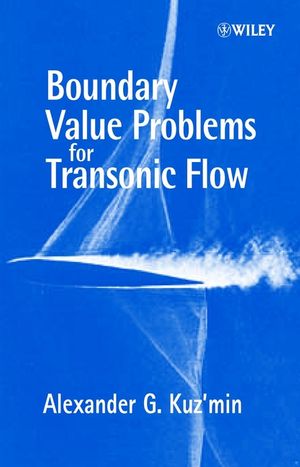Boundary Value Problems for Transonic FlowISBN: 978-0-471-48641-1
Hardcover
316 pages
June 2002
 This is a Print-on-Demand title. It will be printed specifically to fill your order. Please allow an additional 15-20 days delivery time. The book is not returnable.
|
||||||
Transonic flow occurs around moving objects as they approach and cross the sound barrier. Serious problems can occur at this point, such as shock-induced flow separation which can cause the aircraft to spin out of control. Another important practical problem is the achievement of higher aerodynamic performance of aircraft at cruise conditions, which leads to considerable fuel savings. The success in application of numerical methods for simulation of transonic flow and aircraft design depends on developments in the underlying mathematical theory.
This book presents a breakthrough in the solvability analysis of boundary value problems, which makes it possible to establish convergence of finite element approximations for shock-free flow and to provide a framework for putting the existing numerical methods on a more sound basis. Also, physical aspects concerned with patterns of formation and propagation of weak shock waves are analysed. This contributes to the understanding of the extreme sensitivity of transonic flow to perturbation of freestream conditions. The developed theoretical knowledge base yields promising concepts of the airfoil design and active flow control by airfoil/wing shape modifications or suction/blowing through a perforated surface.
Boundary Value Problems for Transonic Flow
* Focuses on Computational Fluid Dynamics.
* Addresses practical problems, such as airfoil design and flow control.
* Presents developments made in the last two decades.
In essence this is a much needed monograph for researchers and engineers in applied mathematics and numerical analysis applied to aerodynamics and for algorithm developers in Computational Fluid Dynamics in the aircraft industry. It gives design engineers the underlying mathematical theory necessary for developing new concepts for airfoil/wing design and flow control.
This book presents a breakthrough in the solvability analysis of boundary value problems, which makes it possible to establish convergence of finite element approximations for shock-free flow and to provide a framework for putting the existing numerical methods on a more sound basis. Also, physical aspects concerned with patterns of formation and propagation of weak shock waves are analysed. This contributes to the understanding of the extreme sensitivity of transonic flow to perturbation of freestream conditions. The developed theoretical knowledge base yields promising concepts of the airfoil design and active flow control by airfoil/wing shape modifications or suction/blowing through a perforated surface.
Boundary Value Problems for Transonic Flow
* Focuses on Computational Fluid Dynamics.
* Addresses practical problems, such as airfoil design and flow control.
* Presents developments made in the last two decades.
In essence this is a much needed monograph for researchers and engineers in applied mathematics and numerical analysis applied to aerodynamics and for algorithm developers in Computational Fluid Dynamics in the aircraft industry. It gives design engineers the underlying mathematical theory necessary for developing new concepts for airfoil/wing design and flow control.



